
Mobile technology dictates consumer habits, giving users literally everything at their fingertips. The situation is no different when it comes to shopping. Businesses that want to stay ahead of the curve need to adjust their marketing, communication, and sales strategies to the ever-evolving expectations of potential buyers.
Optimizing your e-commerce website for mobile devices isn't sufficient to boost your revenue generation capabilities anymore. Keeping up with the competitive market and trends requires cutting-edge solutions that take customer experience (CX) to the next level, enabling efficient and hassle-free shopping. This is where m-commerce mobile apps come into play. What makes them a powerful revenue driver and a real necessity in today's competitive landscape?
An average person uses a mobile phone 5 hours a day, with the lion’s share (or 88% of that time, to be more precise), spent on apps (sources: Data AI, eMarketer). Customers rely on m-commerce mobile apps to finalize transactions more and more frequently. That’s why having a well-developed digital product is a must-have investment for companies striving to leverage their business potential and gain competitive advantages in the customer journey.
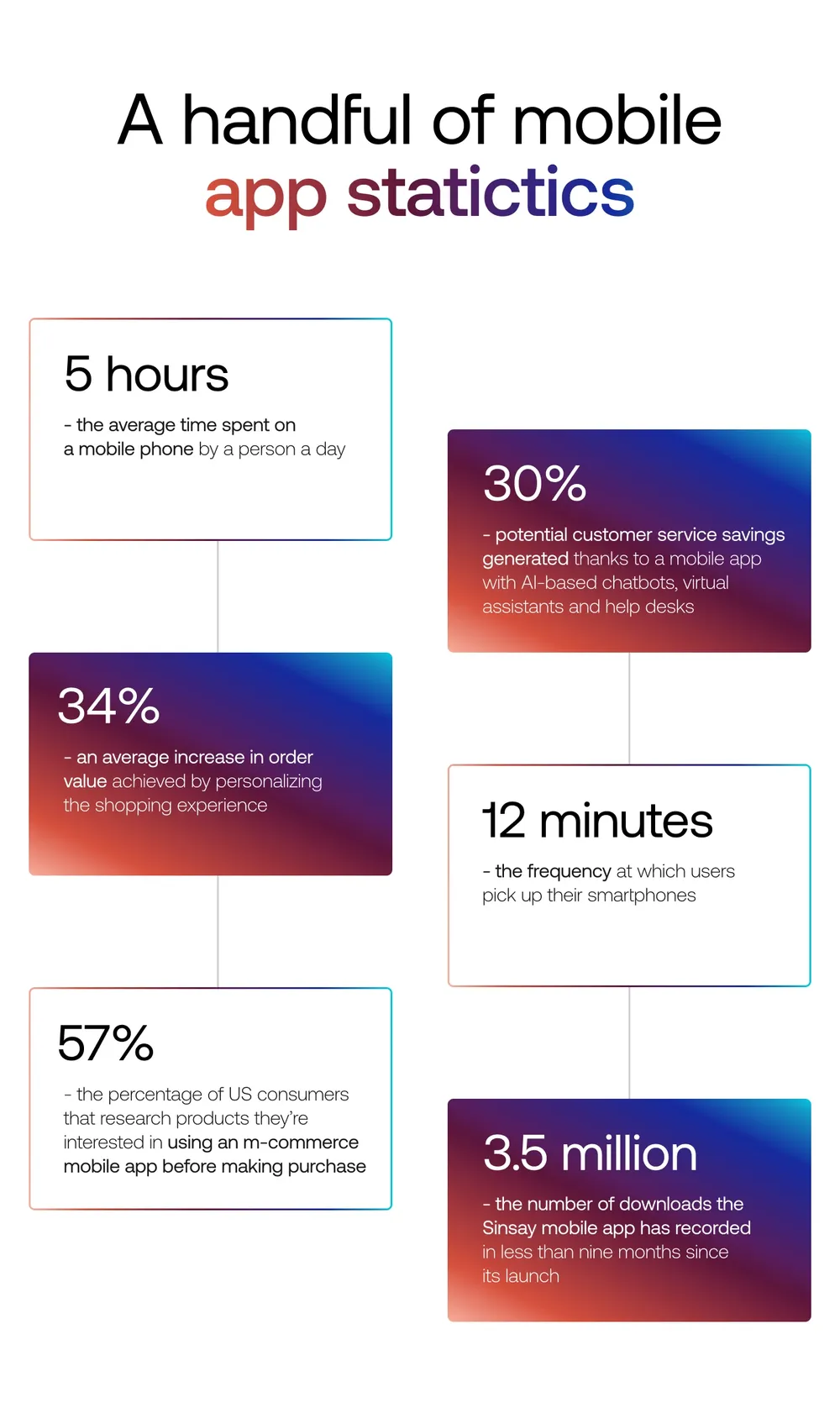
Investing in m-commerce mobile apps gives your business the potential to:
As many as 22% of potential customers give up shopping if the checkout process is too long, time-consuming, or complicated (source: Baymard Institute). Unfortunately, this is often the case when using websites (even mobile-friendly ones).
If you’re struggling with a high shopping cart abandonment rate, developing an m-commerce mobile app can be an answer to your problem. With super advanced digital products, users no longer have to fill in tedious details such as their name, address, preferred form of payment, or credit card number each time. They’re able to finalize transactions from wherever they want, which makes buying easier.
Mobile apps are also generally faster to access, cutting out unnecessary steps and red tape. Users can open them directly on their mobile devices, without having to rely on a search engine or navigate the website. Consequently, apps reduce the number of steps needed to arrive at a desired destination and complete a purchase. They also enable a quick mobile checkout that meets the expectations of a busy society, thus preventing users from abandoning their shopping carts.
Appealing loyalty programs, customized discounts, highly effective referral marketing, and personalized push notifications… These are just some of the possibilities of m-commerce apps that will help you to win more customers, increase mobile app revenue and remind your target audience that it’s worth buying from your business.
Push notifications are an inexpensive way to encourage customers to open your app, while reward programs can incentivize them to engage and make repeat purchases in the future.
Creating an intuitive and functional mobile app will give you a competitive edge in your product or service category, making your offer the default choice for users.
M-commerce mobile apps with AI-based chatbots, help desks, or virtual assistants have a substantial potential for savings. They can help you reduce back-office operating costs associated with hiring customer service specialists and answering routine questions even by 30% (source: IBM).
With tech-savvy tools and the possibility to manage orders through the app's interface, users can quickly resolve the majority of their doubts and benefit from the 24/7 support they expect. This increases the chances that they won’t feel the need to contact the customer service team. Thanks to it, employees can focus on revenue-driving tasks instead of responding to repetitive inquiries.
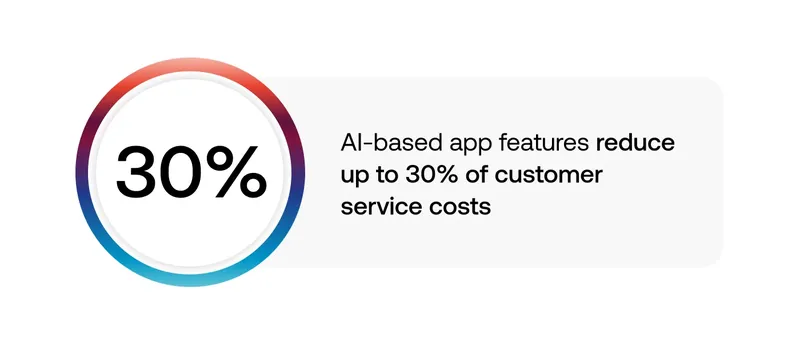
M-commerce mobile apps allow brands to reach their target audience at the right time, with the right message. All this thanks to collecting vital data about user location, preferences, interests, shopping history, and more. By taking advantage of remarketing, programmatic advertising, location data, and hyper-personalization, you can easily prepare attractive offers that correspond to the needs of potential buyers, making them feel catered for.
Just think about push notifications informing potential customers about new products, special discounts, or availability when they pass by your store. These low-hanging fruits are quick ways to leverage user engagement unobtrusively. Thanks to customizing your content, you can show users that your offer fits their needs, ultimately driving their loyalty and improving revenues.
As per the State of Personalization 2022 report, 80% of business leaders confirm that consumers spend up to 34% more if their shopping experience is personalized. Mobile apps allow you to create segments and customize offers based on the activity of various groups of users. It’s a direct communication channel between your brand and target audience. This means you don’t have to be concerned about 3rd party companies controlling or accessing data.
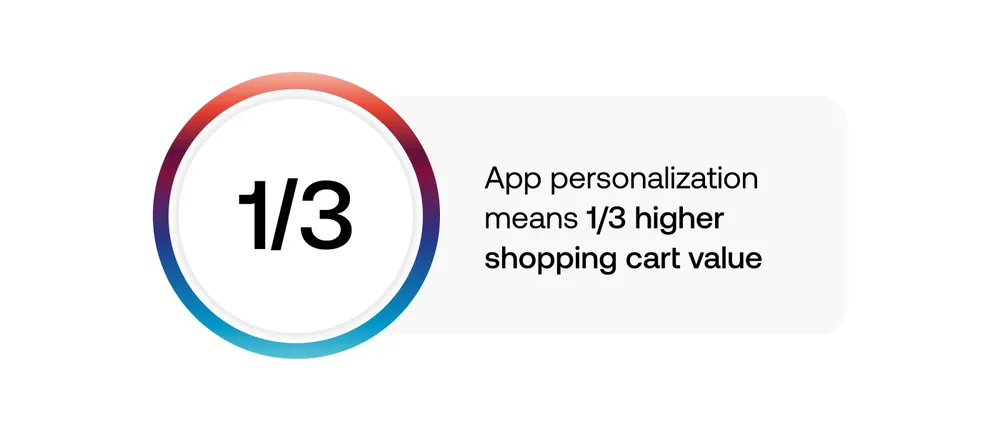
The increasing popularity of m-commerce doesn't mean that in-store shopping is dead. Actually, digital products are indispensable to create an enhanced omnichannel experience, translating into increased sales and better CX.
78% of young people aged 15-20 use phones while shopping in brick-and-mortar stores. Today's consumers prefer to read product reviews online instead of talking to a sales representative. Creating an app where users can access necessary product information can help you influence their decision-making.
At this point, it's worth mentioning that an m-commerce app is much more than reviews or photos. You can use it to navigate customers through your store and help them find what they need. Additionally, you can offer special time-limited discounts to give people an extra incentive to buy once they enter your store. Apps are also increasingly used for mobile in-store checkouts, appreciated by introverts and those easily disheartened by long lines.
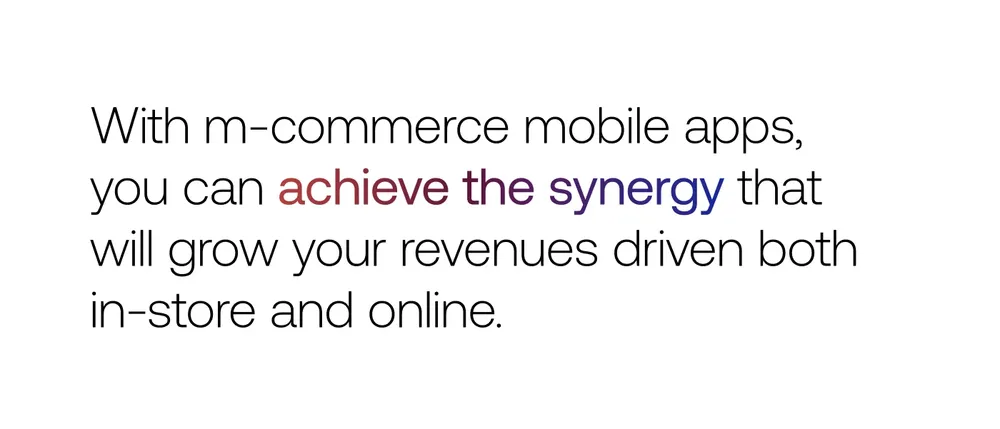
The average American person picks up their smartphone 144 times a day (source: Reviews.org). While in the store, 72% of consumers frequently research products they're interested in using phones. The vast majority of our mobile screen time is spent on apps. This means that even the best website isn't enough to stay ahead of the curve and compete with the greatest market tycoons anymore.
No matter what industry you're in, developing a mobile app can boost your business revenues, while improving CX and allowing you to gain an in-depth understanding of your target audience.
The bottom line is simple – if your competitors have an app, you need it to keep up with them. If they don’t have it yet, it's all the better. You’ll be early in the game, able to capture a bigger market share and make more accurate data-driven decisions.
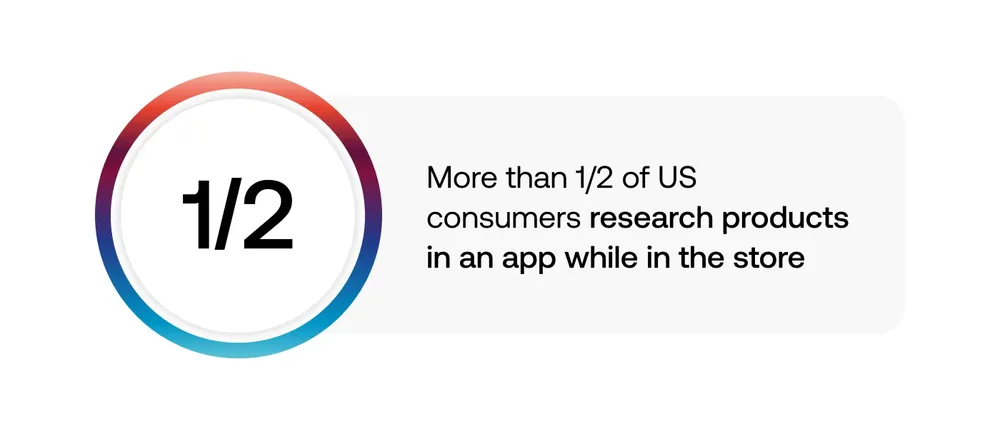
Promising as it may sound, developing a UX-friendly m-commerce mobile app isn’t a walk in the park.
To boost your mobile app revenue potential, it’s crucial to pay special attention to elements like:
When it comes to maximizing mobile app revenue, Shein is a prime example of success. Within a mere decade, the company has outperformed renowned brands like H&M or Zara, accounting for a staggering 50% of sales among fast fashion competitors in 2022 (source: Second Measure).
Shein has leveraged its mobile-first strategy to create an app that is tailored to the needs and preferences of its target audience. This has allowed the brand to tap into the burgeoning trend of mobile shopping and capitalize on the benefits of native mobile apps.
In 2022, the Shein app witnessed a whopping 200 million downloads, surpassing even Amazon. Shein has emerged as the world's fastest-growing e-commerce company, boasting a staggering revenue of US$22.7 billion in the same year (source: Business of Apps).
Shein has achieved a challenging feat that many brands struggle with, which is convincing shoppers to use its mobile app. All this thanks to creating a highly personalized, one-stop destination for the majority of clothing and cosmetic needs.
By selling fast-fashion through its app, Shein capitalizes on their strengths in three key areas: affordability, selection, and addictiveness, which aids in retaining customers. The company hopes to further increase their revenues to a jaw-dropping US$58.5 billion by 2025.
As a Business Development Lead, I can safely say that developing an m-commerce mobile app is definitely worth it.
At Future Mind, we continued our partnership with LPP to build the Sinsay app in collaboration with Silky Coders. In less than a year since the launch, the app has recorded a skyrocketing 4.5 million downloads and reached top positions in the “shopping” and “free apps” categories in the App Store and Google Play stores.
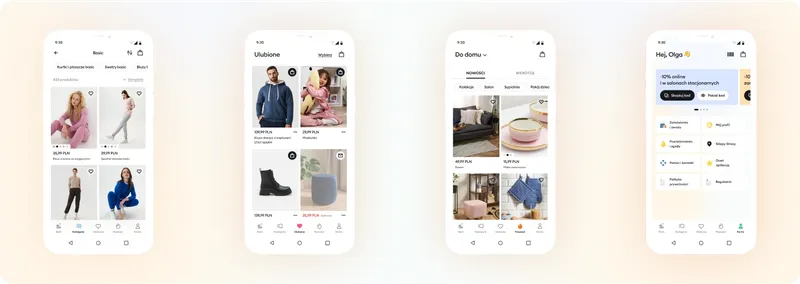
Source: Google Play
Six months after the launch, one-third of the brand’s e-commerce orders were completed through the app. Michał Laskowski , Sinsay's e-commerce director, predicts that this digital product will soon be generating half of the company's e-commerce revenues and is likely to become the main driver of website traffic (source: Dla Handlu).
As Future Mind, we knew we had to create a leading-edge solution that would be extra intuitive to meet the needs of different customer segments.
To streamline product development and manage it at scale, we created a design system for Sinsay and worked in iterations. We regularly gathered feedback from business and design experts as well as end-users. This allowed us to eliminate potential bottlenecks, prepare an innovation roadmap and refine the UX/UI with revenue-increasing features. All this before the white-label product became widely available.
The conclusion is simple — engineering digital products pays dividends if you have the right partner by your side.
M-commerce mobile apps turn interactions into transactions. Investing in well-developed, intuitive, and sticky apps is essential for companies that want to build advantages in the customer journey, offer truly personalized experiences, increase buyer loyalty, and gain a competitive edge.